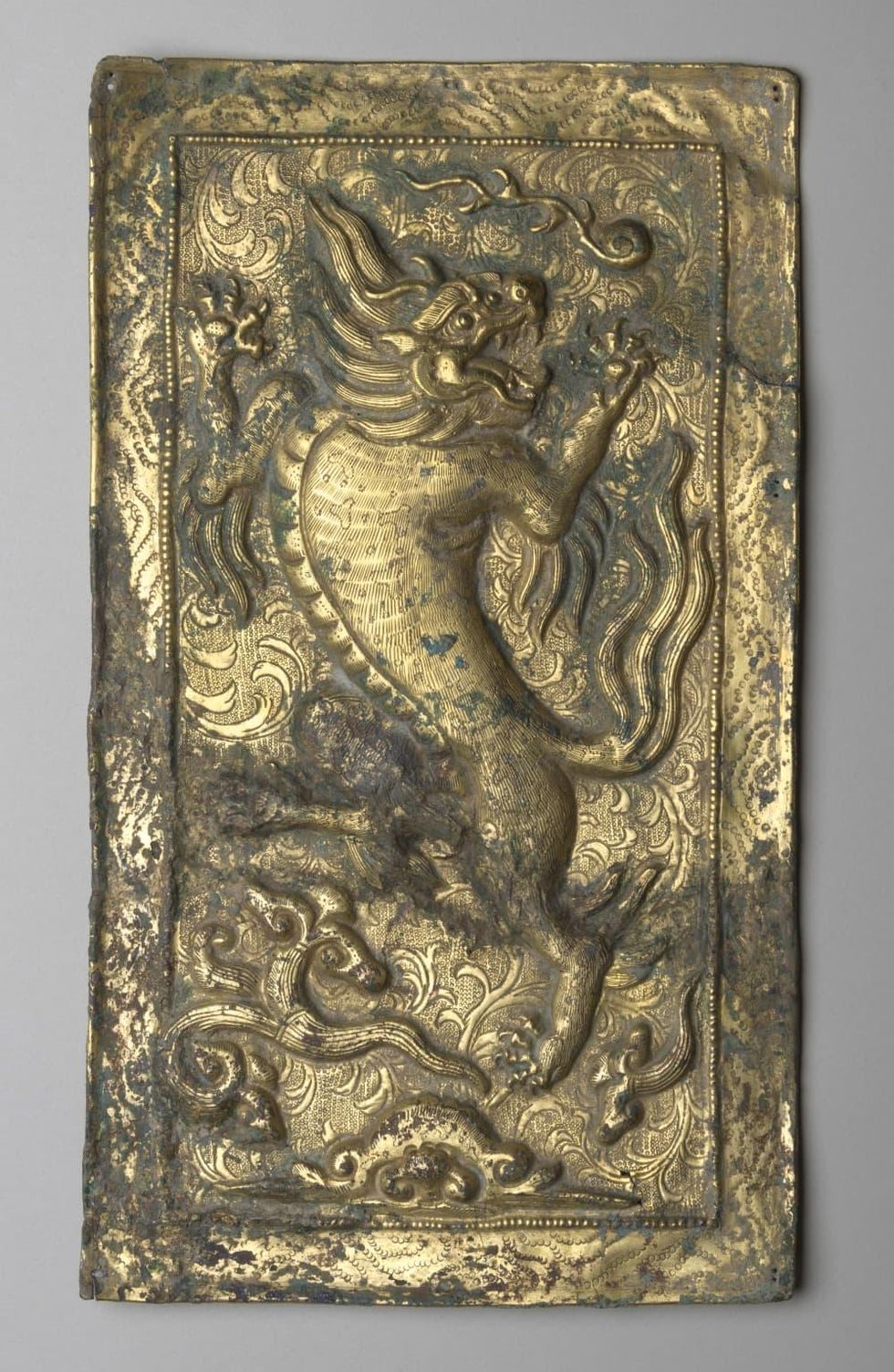Art is Life. Life is Art.
SAMA expands its Chinese art collection with gilt and jade additions
The San Antonio Museum of Art is expanding its already impressive collection of Chinese art with a handful of new acquisitions, it announced on June 29.
Among the new pieces are a gilt openwork crown and a gilt plaque decorated with a standing lion, both from the Liao dynasty (907–1125); a set of jade belt plaques from the Ming dynasty (1368–1644); and a set of gilt silver hairpins embellished with kingfisher feathers from the Qing dynasty (1644–1911).
The new acquisitions are part of an ongoing effort to enhance underrepresented areas within the museum’s wider Asian art collection, which is already solid in ceramics. All pieces were purchased with funds provided by the Bessie Timon Endowment Fund.
“The artworks announced today capture the incredible artistry and skill of Chinese craftsman from across history, while also illuminating the importance of these objects — and the imagery and material they hold — to Chinese culture and society,”says Shawn Yuan, associate curator of Asian art, in a release. “We are delighted to enhance the museum’s Chinese art holdings with these stunning works, which further our ability to share narratives and develop understanding of Chinese material culture through time.”
The gilt crown is a mortuary item for a noblewoman of the semi-nomadic Khitan people, who lived in today’s northern China and Mongolia in the 11th and 12th centuries. The domed cap is covered with chased floral scrolls and surmounted by a lotus flower and a now-missing deity. On each of the attached standing “wings,”two glorious phoenixes, with wide-spreading wings and long tails, are positioned among scudding clouds.
This crown is “an example of the luxurious lifestyle of the Khitan elite, who established the powerful Liao dynasty and controlled an enormous landmass bordering Korea to the east and Central Asia to the west,”notes SAMA.
The gilt bronze plaque decorated with a standing lion is an example of the impressive craftsmanship of the Liao dynasty. The energetic lion, hammered in low relief, stands on his left hind leg while thrusting the other forward. The lion’s broad chest rises, and his massive head turns backward as his flamboyant mane sweeps upward. Under the bushy eyebrows, the lion’s eyes focus intensely on a flaming pearl.
The imagery has a Buddhist origin: The lion guards the Buddha’s teaching while the flaming pearl represents the Buddha’s wisdom. The images of a lion with protective power are rarely seen on other Liao works in the museum’s collection.
The set of 18 jade plaques is the first important jade work to enter the museum’s Chinese collection. Jade has been China’s most valued gemstone since the dawn of its civilization, and these plaques were once attached to belts worn by noblemen.
The rectangular plaques are carved in high relief with lively scenes of male figures teasing frolicking lions with ribbons — an auspicious subject with a long history in Chinese art. The hardness of jade is second only to that of diamonds. The delicate carvings on these plaques present the impressive craftsmanship of the jade carver.
The set of three gilt silver hairpins is an exciting addition to SAMA’s collection of Chinese dragon robes, embroidered brocade, shoes, and jewelry — all items from the wardrobes of upper-class families. All three hairpins are inlaid with kingfisher feathers, whose colors are as brilliant as azurite, lapis, cobalt, and turquoise. They are iridescent in the sunlight, creating a dazzling visual effect.
Kingfisher feathers were a luxury material used in hair ornaments and crowns for thousands of years. The dominant image on each hairpin is a stylized bat with foliate wings outlined in thin silver. Bats are considered auspicious because the word “bat”is pronounced the same as “luck”and “blessing.”




